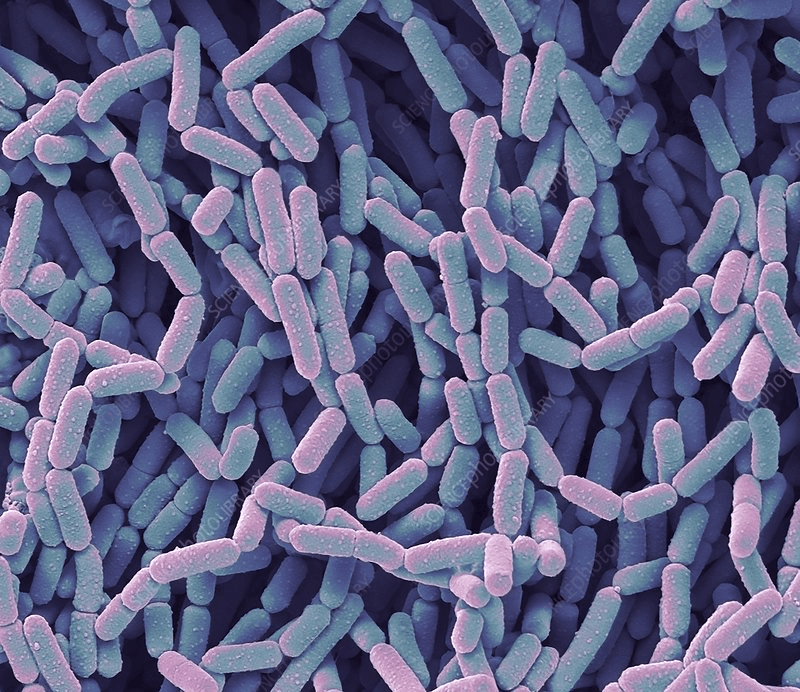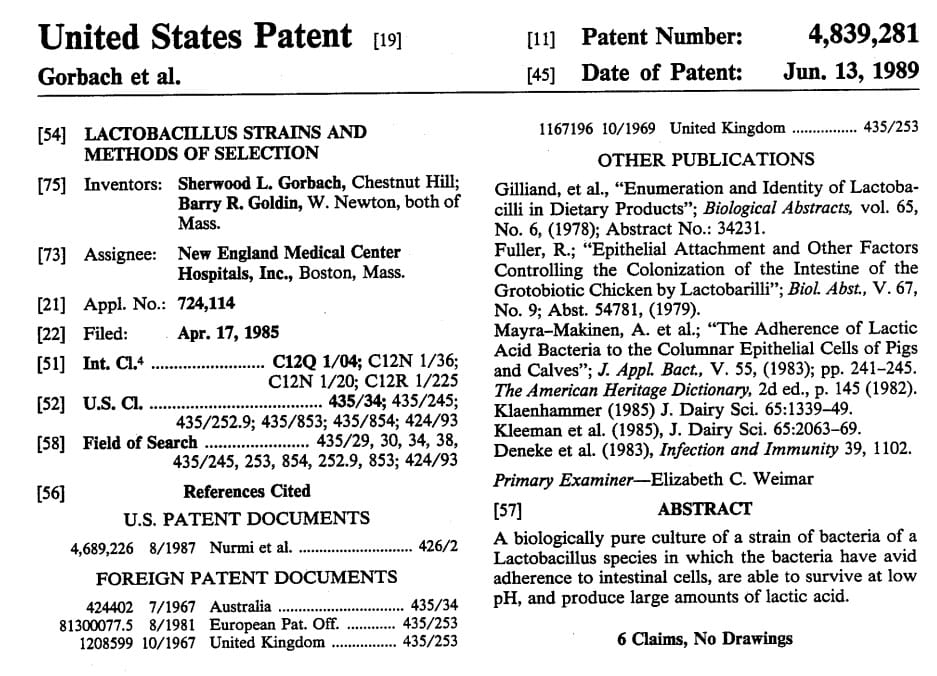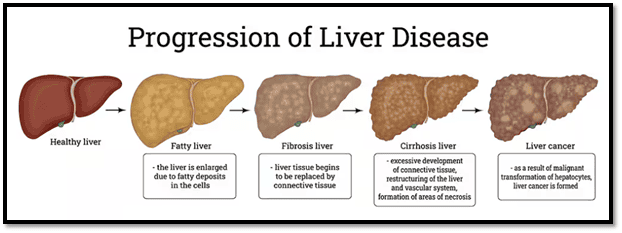History

What would be later named Lacticaseibacillus rhamnosus was originally isolated from human faeces by Sherwood Gorbach and Barry Goldin in 1987, who found it to have strong probiotic potential. This special bacterium outdid several other faecal Lactobacillus isolates in terms of useful properties like stomach acid and bile survival, strong adherence to the cells that make up the walls of the intestine, and producing antimicrobial substances. These traits, especially its ability to attach to intestinal walls, continue to set this bacterium apart for being an effective coloniser of the gut, as compared to other probiotic species.

It was subsequently patented as Lactobacillus rhamnosus GG (LGG), from the initials of its original discoverers and patenters, making it the first Lactobacillus strain to be. In 2020, it was reclassified as Lacticaseibacillus rhamnosus, but it is still commonly referred to by its former name, due to its frequency of use and familiarity among manufacturers and consumers. The new genus name, Lacticaseibacillus refers to the fact that all the species in this group were part of an earlier L. casei group. The species name, “rhamnosus”, refers to the ability of this species to ferment the sugar, rhamnose.
Habitat
This species thrives in diverse environments from multiple human microbiomes- including the gut, vaginal, oral, as well as the external environmental, fermented food, dairy products, and clinical niches.
Health Benefits
L. rhamnosus is widely found in the human gut, where it plays a variety of roles, through multiple mechanisms. Foremost, is its ability to effectively colonise the gut and the mucus lining. Through the formation of biofilms, it is also able to protect this mucosal lining as well as maintain the integrity and proper functioning of the intestinal wall. It also produces antimicrobial molecules and recruits immune cells that ward off certain gut pathogens. It is also able to regulate immune responses and neurotransmitter levels in the body.
Applications

L. rhamnosus is perhaps the most studied probiotic species for its ability to positively impact human health in a variety of ways, with the most popular strain being LGG. Originally, it was used to treat C. difficile infections, which wreak havoc on the GI tract and the microbiome.
L. rhamnosus is now known to show benefit in multiple conditions associated with imbalances in the gut microbiome. One of its more popular uses is to combat diarrhoea, and LGG has been shown to decrease the duration of illness and reduce the frequency of its occurrence, especially in children. It is also known to improve symptoms of disorders like irritable bowel syndrome (IBS) in children as well. While it has also been used for the improvement of inflammatory disorders like IBS and IBD, there are conflicting results with respect to its effectiveness; regardless it is clear that LGG has a positive impact on the GI tract and is a powerful tool for helping in the handling of dysbiosis.
Besides gut disorders, L. rhamnosus also helps in treating and preventing diseases in other systems. There is some evidence that it helps in faster recovery and reduced rates of occurrences of respiratory infections, and has the ability to fight other pathogens by producing antimicrobial molecules. This species has also been used in trials across various conditions, including allergies, liver disease, and chronic inflammatory conditions.
Risks
While LGG is largely safe and its use is widespread over decades, there are occasional cases of adverse effects like worsening of a disease state through the use of this probiotic. There may be multiple reasons for such unfavourable outcomes like type of L. rhamnosus strain used and patient’s immune status. Such variabilities must be well-characterised and should be subjected to appropriate regulation to ensure the best outcomes and maximum safety.
Did you know?

This is the original patent document for the strain GG! They initially referred to it as a strain of Lactobacillus acidophilus, which was then later reclassified to its current “rhamnosus” designation based on its properties.
L. rhamnosus when cultured has a buttery smell! Ironically, the LGG strain survives poorly in milk due its poor ability to use the major milk protein casein, or its main sugar lactose- but it is still sometimes used to make dairy products.
Microbe Profile
Gram nature : Positive
Shape : Bacilli, single or chains
Spore formation : No
Biofilm formation : Yes
Oxygen requirement : Oxygen- tolerant, but grows well without
Temperature range : 15 to 45 degrees Celsius
Optimal pH : 4.5 to 6.4
Food Source : Rhamnose, Arabinose and Sucrose
Taxonomic Classification
Domain : Bacteria
Phylum : Bacillota
Class : Bacilli
Order : Lactobacillales
Family : Lactobacillaceae
Genus : Lacticaseibacillus
Species : Lacticaseibacillus rhamnosus
-Antara Arvind
References
- Doron, S., Snydman, D. R., & Gorbach, S. L. (2005). Lactobacillus GG: Bacteriology and clinical applications. Gastroenterology Clinics of North America, 34(3), 483–498. https://doi.org/10.1016/j.gtc.2005.05.011
- Zheng, J., Wittouck, S., Salvetti, E., Franz, C. M., Harris, H. M., Mattarelli, P., O’Toole, P. W., Pot, B., Vandamme, P., Walter, J., Watanabe, K., Wuyts, S., Felis, G. E., Gänzle, M. G., & Lebeer, S. (2020). A taxonomic note on the genus Lactobacillus: Description of 23 novel genera, emended description of the genus Lactobacillus Beijerinck 1901, and union of Lactobacillaceae and Leuconostocaceae. INTERNATIONAL JOURNAL OF SYSTEMATIC AND EVOLUTIONARY MICROBIOLOGY, 70(4), 2782–2858. https://doi.org/10.1099/ijsem.0.004107
- Sakai, T., Oishi, K., Asahara, T., Takada, T., Yuki, N., Matsumoto, K., Nomoto, K., & Kushiro, A. (2010). M-RTLV agar, a novel selective medium to distinguish Lactobacillus casei and Lactobacillus paracasei from Lactobacillus rhamnosus. International Journal of Food Microbiology, 139(3), 154–160. https://doi.org/10.1016/j.ijfoodmicro.2010.03.019
- Valík, Ľubomír & Medveďová, Alžbeta & Liptakova, Denisa. (2008). Characterization of the growth of Lactobacillus rhamnosus GG in milk at suboptimal temperatures. Journal of food and nutrition research. 47. 60-67.
- Śliżewska, K., & Chlebicz-Wójcik, A. (2020). Growth Kinetics of Probiotic Lactobacillus Strains in the Alternative, Cost-Efficient Semi-Solid Fermentation Medium. Biology, 9(12), 423. https://doi.org/10.3390/biology9120423
- Işık, M., Köse, F., Özbayer, C., Budak, Ö., Kaya, R. K., Erdoğan, D. G., Demirci, M. A., Doğanay, S., & Bağcı, C. (2025). Promising Antidepressant Potential: The Role of Lactobacillus rhamnosus GG in Mental Health and Stress Response. Probiotics and Antimicrobial Proteins. https://doi.org/10.1007/s12602-025-10470-0
- Tette, F. M., Kwofie, S. K., & Wilson, M. D. (2022). Therapeutic Anti-Depressant Potential of Microbial GABA Produced by Lactobacillus rhamnosus Strains for GABAergic Signaling Restoration and Inhibition of Addiction-Induced HPA Axis Hyperactivity. Current issues in molecular biology, 44(4), 1434–1451. https://doi.org/10.3390/cimb44040096
- Kant, R., Rintahaka, J., Yu, X., Sigvart-Mattila, P., Paulin, L., Mecklin, J. P., Saarela, M., Palva, A., & von Ossowski, I. (2014). A comparative pan-genome perspective of niche-adaptable cell-surface protein phenotypes in Lactobacillus rhamnosus. PloS one, 9(7), e102762. https://doi.org/10.1371/journal.pone.0102762
- Guo, H., Yu, L., Tian, F., Chen, W., & Zhai, Q. (2023). The Potential Therapeutic Role of Lactobacillaceae rhamnosus for Treatment of Inflammatory Bowel Disease. Foods (Basel, Switzerland), 12(4), 692. https://doi.org/10.3390/foods12040692
- Capurso, L. (2019). Thirty Years of Lactobacillus rhamnosus GG. Journal of Clinical Gastroenterology, 53(Supplement 1), S1–S41. https://doi.org/10.1097/mcg.0000000000001170
- Stage, M., Wichmann, A., Jørgensen, M., Vera-Jimenéz, N. I., Wielje, M., Nielsen, D. S., Sandelin, A., Chen, Y., & Baker, A. (2020). Lactobacillus rhamnosus GG Genomic and Phenotypic Stability in an Industrial Production Process. Applied and environmental microbiology, 86(6), e02780-19. https://doi.org/10.1128/AEM.02780-19
- Hussain, N., Li, R., Takala, T. M., Tariq, M., Zaidi, A. H., & Saris, P. E. J. (2021). Generation of Lactose- and Protease-Positive Probiotic Lacticaseibacillus rhamnosus GG by Conjugation with Lactococcus lactis NCDO 712. Applied and environmental microbiology, 87(6), e02957-20. https://doi.org/10.1128/AEM.02957-20


